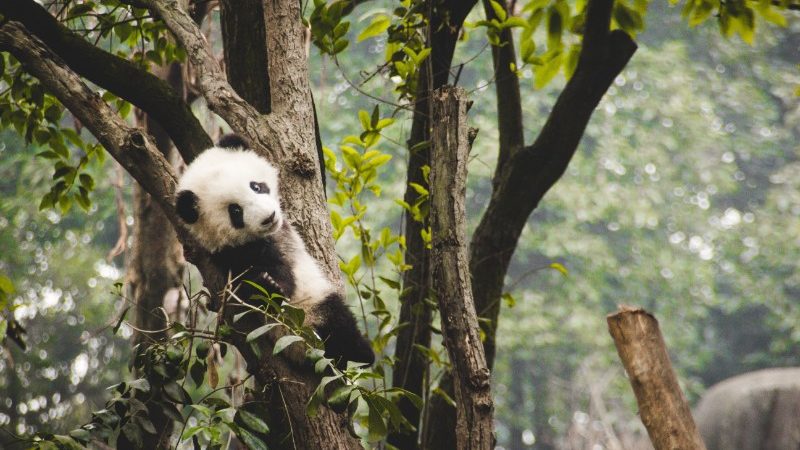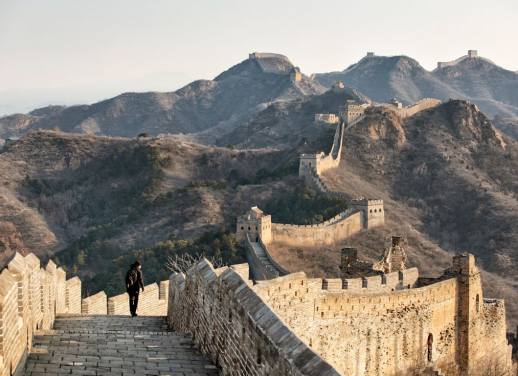China is a big country, and it has some big attractions, from the Great Wall of China to the amazing terracotta warriors.
While we wouldn’t encourage you to skip the crowd-pleasers – hey, they’re popular for a reason – China has heaps of important sites that are just as worth visiting as the big sellers. Plus, you won’t have to battle the crowds for a photo.
Shopping in Shanghai…
 This city is one of the biggest on Earth, and it has the shopping appetite to match. If you can’t find it in Shanghai, it can’t be bought. But although Shanghai has the flashy shopping complexes that you’d expect, shopping in the city isn’t just about the designer labels and chain shops. The old guard is still there in older shopping centres, like the South Bund Fabric Market. This market is big, bustling, booming and crowded, but it’s the place to come if you want to buy fabric – and then have it fitted and stitched. Shop up a storm in Shanghai on these Intrepid trips.
This city is one of the biggest on Earth, and it has the shopping appetite to match. If you can’t find it in Shanghai, it can’t be bought. But although Shanghai has the flashy shopping complexes that you’d expect, shopping in the city isn’t just about the designer labels and chain shops. The old guard is still there in older shopping centres, like the South Bund Fabric Market. This market is big, bustling, booming and crowded, but it’s the place to come if you want to buy fabric – and then have it fitted and stitched. Shop up a storm in Shanghai on these Intrepid trips.
… versus the Sunday Market in Kashgar
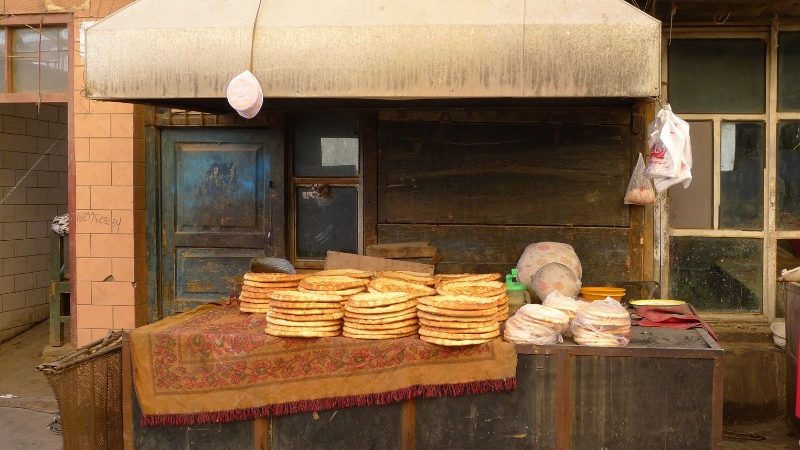 To market, to market, to buy yourself… whatever you want, really. You have to go a long way to shop in Kashgar, which is around 3,500 kilometres from Beijing. Luckily, it’s worth it. The Sunday Market in Kashgar has been providing travellers with the finest in horses, hats (there’s more headgear than Royal Ascot here), dried nuts, kitchenware – you name it – for over 2000 years, when the town was an important stop on the Silk Road. Don’t let the name fool you, either; the Sunday Market in the old town is open every day. The animal section of the market, however, is now found out of town and it’s only open on Sundays. Hit up the Kashgar markets on these small group adventures.
To market, to market, to buy yourself… whatever you want, really. You have to go a long way to shop in Kashgar, which is around 3,500 kilometres from Beijing. Luckily, it’s worth it. The Sunday Market in Kashgar has been providing travellers with the finest in horses, hats (there’s more headgear than Royal Ascot here), dried nuts, kitchenware – you name it – for over 2000 years, when the town was an important stop on the Silk Road. Don’t let the name fool you, either; the Sunday Market in the old town is open every day. The animal section of the market, however, is now found out of town and it’s only open on Sundays. Hit up the Kashgar markets on these small group adventures.
RELATED: CHENGDU – YOUR GUIDE TO CHINA’S HOTTEST DESTINATION
The Great Wall near Beijing…
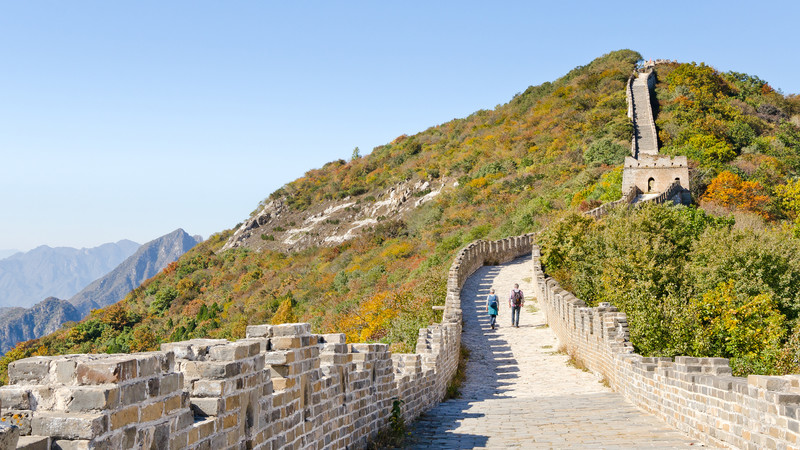 The Great Wall of China might just be the greatest manmade structure on Earth – 21,196 kilometres of defensive wall and trenches that are up to a thousand years old, built over numerous dynasties, all with the aim of protecting the Chinese empire. Well, it doesn’t so much protect China anymore, but it does draw in the tourists; particularly the sections near Beijing. While the most popular (and most restored) section of the wall near Beijing at Badaling might remind you of the subway crush in peak hour, you could be the only person on the wall on the partially restored Jinshanling section. This picturesque section of the wall has 31 watchtowers, one every 150 metres, with brick and stone walls rolling over forested hills. It’s stupidly beautiful, and if you walk from Jinshanling to Simatai, there’s a flying fox to take you down the wall at the end. Stroll along this section of the Great Wall on any of these Intrepid trips.
The Great Wall of China might just be the greatest manmade structure on Earth – 21,196 kilometres of defensive wall and trenches that are up to a thousand years old, built over numerous dynasties, all with the aim of protecting the Chinese empire. Well, it doesn’t so much protect China anymore, but it does draw in the tourists; particularly the sections near Beijing. While the most popular (and most restored) section of the wall near Beijing at Badaling might remind you of the subway crush in peak hour, you could be the only person on the wall on the partially restored Jinshanling section. This picturesque section of the wall has 31 watchtowers, one every 150 metres, with brick and stone walls rolling over forested hills. It’s stupidly beautiful, and if you walk from Jinshanling to Simatai, there’s a flying fox to take you down the wall at the end. Stroll along this section of the Great Wall on any of these Intrepid trips.
… versus the Jiayuguan Great Wall
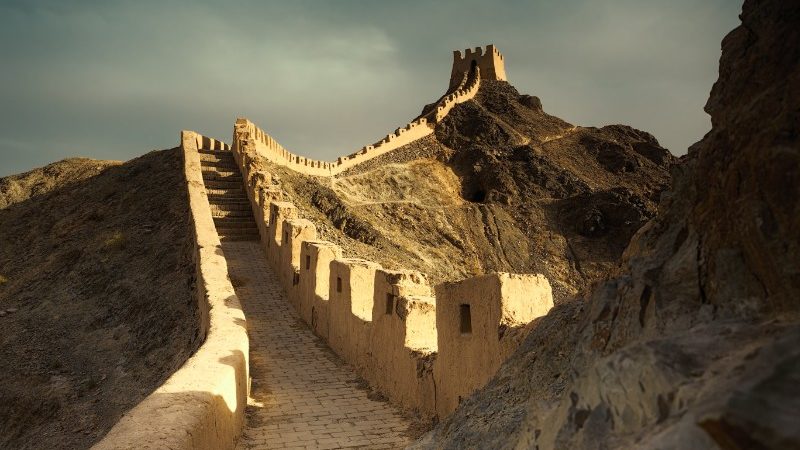 At 21,196 kilometres long, there’s more to the Great Wall than the sections near Beijing. If you want a totally different experience of the Great Wall away from the crowds, head to Jiayuguan, around 2000 kilometres west of Beijing. This is where you’ll find the western starting point of the Ming Dynasty Great Wall, as well as one of the greatest remaining passes of the Great Wall, which people used to enter China. The Jiayu Pass faces the Gobi desert, and its heavily fortified outer city and inner city are still in excellent condition. Come to explore a face of the Great Wall that not many people get to see. Wander the wall less travelled on these Intrepid adventures.
At 21,196 kilometres long, there’s more to the Great Wall than the sections near Beijing. If you want a totally different experience of the Great Wall away from the crowds, head to Jiayuguan, around 2000 kilometres west of Beijing. This is where you’ll find the western starting point of the Ming Dynasty Great Wall, as well as one of the greatest remaining passes of the Great Wall, which people used to enter China. The Jiayu Pass faces the Gobi desert, and its heavily fortified outer city and inner city are still in excellent condition. Come to explore a face of the Great Wall that not many people get to see. Wander the wall less travelled on these Intrepid adventures.
RELATED: 7 UNIQUE EXPERIENCES TO HAVE IN CHINA
Panda bears…
If you ever want to move from watching cute videos of pandas on the internet to seeing them in real life, Chengdu in China is the place to go. Panda bears have become the icons of modern China, but these giant bears are still considered vulnerable, with only 2000 in the wild. For many years, the bears’ habitat of mountainous forest was destroyed, and although China is now returning farmland back to woodland, the bears are still being protected in numerous sanctuaries in Sichuan – which means you can visit for a photo opp or two! See pandas on these cute China adventures.
… versus moon bears
 Even though pandas dominate all the press, there’s another species of bear that’s native to Asia, and is just as vulnerable. The moon bear – so named for the distinctive white crescents on their chests – are often caged and farmed for their bile, which is used in traditional medicine. Animals Asia have established a sanctuary in Chengdu, where they rescue and rehabilitate these bears, who often have horrifying scars from captivity. Visits are limited to twice a month, and priority is given to Animals Asia donors.
Even though pandas dominate all the press, there’s another species of bear that’s native to Asia, and is just as vulnerable. The moon bear – so named for the distinctive white crescents on their chests – are often caged and farmed for their bile, which is used in traditional medicine. Animals Asia have established a sanctuary in Chengdu, where they rescue and rehabilitate these bears, who often have horrifying scars from captivity. Visits are limited to twice a month, and priority is given to Animals Asia donors.
Terracotta warriors…
 The Mausoleum of the First Qin Emperor – more famously known as the terracotta warriors – was the archaeological find of the twentieth century (sorry, Tutankhamun). The more than 8000 terracotta warriors, 600 horses, 120 chariots were only discovered when some farmers tried to dig a well at the base of Lishan Mountain. The emperor these warriors were protecting into the afterlife, Qin Shi Huang, is known as the emperor to first unify China, so we suppose he deserves a fitting send-off, and this terracotta entourage, with startling detail, certainly fits the bill. The mausoleum, which displays hundreds of figures still lined up in the pits where they were discovered, is deservedly one of the major attractions in China, and has the crowds and tourist touts to prove it. Visit Xi’An and see the incredible warriors on any of these Intrepid adventures.
The Mausoleum of the First Qin Emperor – more famously known as the terracotta warriors – was the archaeological find of the twentieth century (sorry, Tutankhamun). The more than 8000 terracotta warriors, 600 horses, 120 chariots were only discovered when some farmers tried to dig a well at the base of Lishan Mountain. The emperor these warriors were protecting into the afterlife, Qin Shi Huang, is known as the emperor to first unify China, so we suppose he deserves a fitting send-off, and this terracotta entourage, with startling detail, certainly fits the bill. The mausoleum, which displays hundreds of figures still lined up in the pits where they were discovered, is deservedly one of the major attractions in China, and has the crowds and tourist touts to prove it. Visit Xi’An and see the incredible warriors on any of these Intrepid adventures.
… versus Han Yang Ling Mausoleum
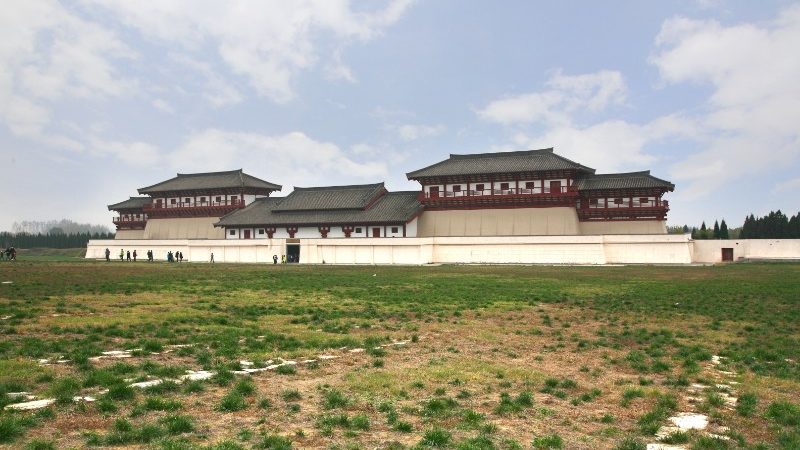 Emperor Jing was the fourth emperor of the Western Han Dynasty, the dynasty that ruled China after the death of Qin Shi Huang. Although Jing’s tomb is a mere 50 kilometres from the Mausoleum of the First Qin Emperor, they are worlds apart – while Qin Shi Huang was known as a unifying conqueror, Jing wanted to be remembered for his peaceful rule. If you visit his tomb, you’ll see that the terracotta figures that accompanied him into the afterlife were not warriors, but instead simply drawn sheep, chickens, servants, concubines, cavalry. The museum has put see-through floors down over the tomb, so you can walk over parts still being excavated. It’s not nearly as crowded, and offers a different – and fascinating – perspective on early China. See the ‘other’ terracotta community on these Intrepid small group tours.
Emperor Jing was the fourth emperor of the Western Han Dynasty, the dynasty that ruled China after the death of Qin Shi Huang. Although Jing’s tomb is a mere 50 kilometres from the Mausoleum of the First Qin Emperor, they are worlds apart – while Qin Shi Huang was known as a unifying conqueror, Jing wanted to be remembered for his peaceful rule. If you visit his tomb, you’ll see that the terracotta figures that accompanied him into the afterlife were not warriors, but instead simply drawn sheep, chickens, servants, concubines, cavalry. The museum has put see-through floors down over the tomb, so you can walk over parts still being excavated. It’s not nearly as crowded, and offers a different – and fascinating – perspective on early China. See the ‘other’ terracotta community on these Intrepid small group tours.
Explore China’s top spots now on an Intrepid small group adventure.


